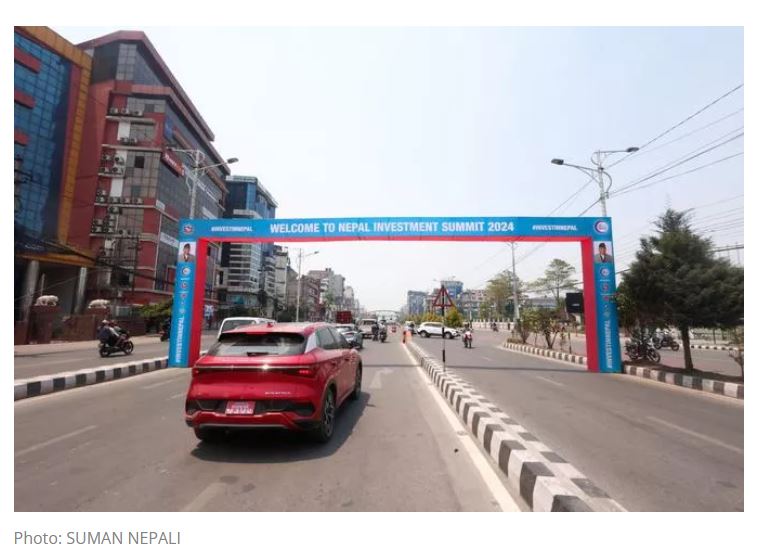For Prime Minister Pushpa Kamal Dahal the past week has been eventful in more ways than one. His Home Minister Rabi Lamichhane’s troubles is shaking the coalition, and there are rumours of the NC and the UML in talks. By-elections in Ilam and Bajhang are set to become a referendum on legacy parties.
In the midst of all this, there was the overnight state visit of the emir of Qatar which was so epic the government declared a national holiday. Qatar and Nepal signed a commerce agreement, and to sweeten the deal the emir was gifted two elephants.
The Qatari visit set the stage for the third Nepal Investment Summit on 28-29 April that will showcase 150 projects for potential investors, including schemes for hydropower, transport, tourism, and agriculture.
Previous investment summits in 2017 and 2019 pledged $13.5 billion and $17 billion respectively, of which not much ever materialised. This time, the investment climate is worse because of political instability, too few laws, and too much red tape.
“The state of Nepal’s economy, combined with bureaucratic hurdles and the challenges faced by foreign investors in land and resource acquisition, has made attracting FDI difficult,” says Pushkar Bajracharya, formerly of the National Planning Commission.
The same woes from the last two investment summits persist. Nepal has had three coalition governments in the last two years, banks are flush with cash because no one is borrowing, and there is a mass exodus of skilled Nepalis.
“Lack of political stability results in policy instability,” explains economist Posh Raj Pandey. “This is why Nepal’s FDI has not lived up to commitments. Potential investors have decided that internal risk factors outweigh any business opportunities.”
Everyone went to sleep after the last investment summit, and there was little preparation for this hurriedly planned one. Nepal’s private sector has long urged the government to amend laws to improve the investment climate. The government did amend nine out of dozens of laws, but through ordinance on Tuesday.
“What kind of message are we sending to internationals when we amend laws through ordinance rather than Parliament?” asks Pandey. “Amendment will not inspire confidence unless they are put into practice, which we historically have not done.”
While some experts think ordinances speed things up, they admit most legal changes brought to address Nepal’s investment environment have been ad hoc and limited to paper.
Forget foreign investors, even domestic businesses face obstacles and corruption. Nepal’s internet service providers (ISPs) and the Nepal Telecommunication Authority are on the warpath.
ISPs have been unable to pay Indian firms that provide bandwidth after the government refused to provide them with INR, citing unpaid royalties and taxes.
Such stonewalling is present in just about every sector, dissuading investors in IT, banking and the service industry. Most investors are in natural resource extraction, which has little value added.
This time the government is giving investors a shopping list that includes 18 hydropower projects and 19 transport schemes.
“While hydropower may create short-term jobs, efficiency-seeking investment in the manufacturing, agricultural, and other sectors will create more long-term opportunities for Nepalis, and will be in our best interest,” says Pandey.
Although the summit will have attendees from over 50 countries, most potential investors are from India and China.
“Current investment summits seem to be guided by India and China’s vested interest in Nepal rather than the market and economic possibilities here,” notes Bajracharya. However, Nepal can leverage its proximity to hitch its wagons to these two giant locomotives.
Adds Bajracharya “Our long-term prospects look good, because India and China are set to overtake the US as the world’s biggest economies over the next few years, which will attract investors from elsewhere. Our immediate goal must be to first create a conducive investment climate. After that, investments will come.”
(Source- Nepalitimes)


